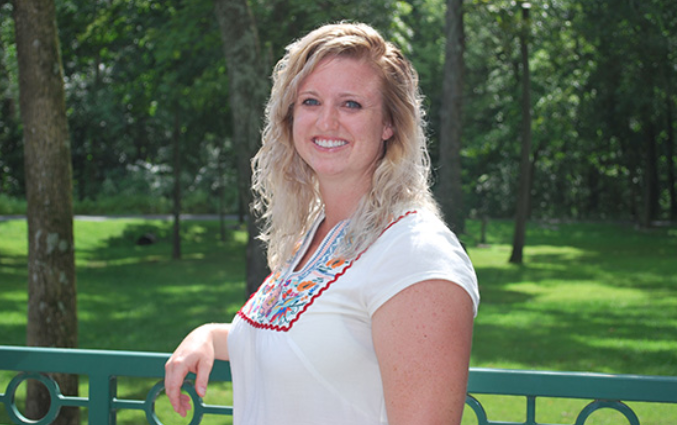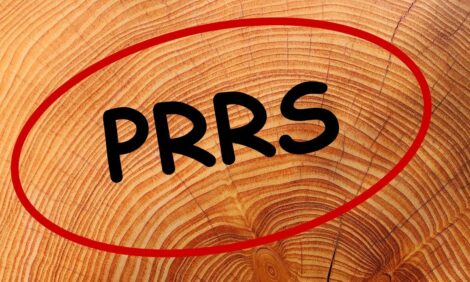



Controlled exposure to M. hyo is valuable tool for eliminating the pathogen
Controlled exposure to Mycoplasma hyopneumoniae (M. hyo) has drawn more interest in the swine industry due to a better understanding of the shedding dynamics from unstable animals within the farrowing house and its impact on the downstream herd.1,2 Controlled exposure is also useful for establishing day 03,4 in M. hyo-elimination programs.
How controlled exposure of M. hyo is managed varies with the desired end status of the breeding herd. When there’s an increasing number of replacement breeding animals being produced free of M. hyo, there’s a greater need to incorporate M. hyo-exposure mechanisms in positive herds that either should remain or become stable and in M. hyo-positive herds that aim to become negative or naïve.
Additionally, when used in conjunction with an M. hyo-closure program, exposing all or some part of the herd to M. hyo is often considered an early crucial first step in the herd-closure process.
Regardless of the breeding herd’s final M. hyo status, the goal of controlled M. hyo exposure for replacement gilts and/or mature breeding animals is to create improved performance in the terminal market animals.
Exposure methods
Seeder gilts
Using seeder animals for M. hyo exposure has been widely used within the US swine industry. When utilizing seeder animals, the duration of shedding should be considered. Pieters, et al, 2009, demonstrated that animals can shed M. hyo for more than 200 days.5
The use of seeder animals to expose replacement gilts can be successful if the optimal number of seeder animals is utilized.6 However, the need for a high ratio of seeder animals to replacement animals presents a challenge to the flow of animals in isolation and in gilt-development facilities. This can cause a suboptimal impact to production practices and increase the cost of developing replacement breeding stock.
Additionally, due to the eventual development of immunity, there is potential for the infection and pathogen shedding from the seeder animals to decrease over time.
Intratracheal inoculation
Intratracheal inoculation is another option for exposing individual animals to M. hyo. This method has been well defined in research settings and challenge models.7 It has also been used to expose seeder animals prior to their use in herd-elimination programs.
This method involves administering a lung-homogenate inoculum through an intratracheal catheter to individual animals. It is challenging, labor intensive and requires animal restraint by multiple personnel to properly execute the inoculation procedure.
Aerosol exposure
A less invasive and less labor-intensive method for M. hyo exposure to large populations of animals is aerosol exposure.8,9 It requires that a lung homogenate inoculum be mixed with a media to be aerosolized by means of a mechanical fogger.
Farm personnel can carry or evenly distribute the mechanical foggers throughout the facility housing the animals to be exposed. In some situations, ventilation modifications have been used to enhance the respiratory rate of the exposed animals with the intent of increasing inhalation of the aerosolized M. hyo homogenate.10
The most commonly used media for homogenate is Friss Medium (Teknova, Hollister, CA), but alternative media, such as saline, have been evaluated and demonstrated to be successful. Various ratios of lung homogenate-to-media have been used when diluting the source homogenate into the fogger, as well. Once the homogenate is diluted, the range of dose administered has been reported from 8mL to 16 mL per gilt.11,12
Variation in the number of mechanical foggers required for a successful exposure may correlate with the space within the barn or room housing the animals to be exposed.
This procedure was described in two studies with different room designs. Nickel, et al, in 2018 utilized five foggers in two nursery rooms, while Hewitt, et al, in 2019 used two foggers to expose a pen of 125 animals in a naturally ventilated barn.13 Some production systems have reported using foggers in sow farms to establish day 0 of a herd closure for M. hyo-elimination programs.
Several variables that might sway the outcome — barn design, ventilation adjustments, number of foggers required, homogenate dose per gilt and dilution ratio for media and homogenate for successful execution of aerosol exposure — have been explored, but more research in this area is warranted.
Donor animals
Donor animals must be selected for creating the lung-homogenate material used in intratracheal and aerosol inoculation techniques. Careful consideration should be taken when selecting the donor animals for creating a herd-specific lung homogenate.14
Donor animals may be selected following observation of clinical signs of M. hyo in presumed-positive animals and confirmation of positive status by specific real-time polymerase chain reaction (PCR) testing of post-mortem lung tissues or bronchial swabs. Alternatively, ante-mortem samples such as laryngeal or tracheal swabs could be collected and tested by PCR from donor animals prior to euthanasia.
Lung homogenate
Following donor-animal selection, lung tissue from humanely euthanized animals can be evaluated for lesions indicative of M. hyo infection. In addition, a portion of the lung should be submitted for PCR testing to confirm the presence of M. hyo prior to creating the homogenate.
The minimum infectious dose required (1 × 105 CCU/mL) to have successful colonization of M. hyo has previously been described by Marois, et al, 2010. Robbins, et al, 2019, suggested criteria for PCR-cycle threshold values at ≤ 26 for those tissues selected for homogenate production. Variations between strains of M. hyo have been reported and should be considered when herd-based decisions are made within a specific gilt-acclimation program.
To create the homogenate, whole lung tissues are blended with a liquid medium to a slurry consistency using a standard household or industrial model kitchen blender. In some studies, homogenate straining mechanisms are used to control consistency after use of the blender. The recommended ratio of tissue to medium varies from study to study (60:40 or 70:30).,15,16
The blended homogenate slurry is typically stored in small aliquots at -80ºC.17,18 Survivability of the M. hyo bacterium in the homogenate over time is not well defined, but homogenate has been successfully stored up to 3 years with some strains of M. hyo. A strain-dependent log reduction of bacterial titers can happen and potentially may impact successful use of the homogenate in exposure programs.19
Prior to use in exposure methods, lung-homogenate slurry must be thawed. In field settings, the homogenate can be transferred to the farm in a cooler and thawed using a running cold-water bath. Once thawed, the homogenate can then be further diluted as needed for intratracheal or aerosol exposure.
Exposure verification
After any exposure process, success should be verified. Various techniques are available to collect ante-mortem samples post exposure.20 Commonly used sample types include laryngeal swabs, tracheobronchial swabs and serum. Time-to-detection and sensitivity of the ante-mortem sample types should be considered on a herd-by-herd basis when decisions are being made regarding sample type(s) to be collected.21-23
More research necessary
Controlled exposure methods for M. hyo have continued to evolve with the increasing number of swine herds that have undergone M. hyo elimination. Fano, et al, assessed nebulization technology for gilt exposure in a study last fall, which shed additional light on the topic.24
Despite this evolution, knowledge gaps still exist regarding the techniques used to create homogenate, the survivability of M. hyo bacteria within the homogenate over time and the clinical significance, if any, of variation between M. hyo strains.
Additionally, the impact of secondary pathogens that may be contained in a homogenate from donor animals on the health of the receiving herds is not well-documented.
Finally, the various environments where each of these exposure methods have been applied, and how those variations may affect the success of the M. hyo-exposure program, are neither standardized nor well-researched.
These factors emphasize the need for continued research on control, exposure and elimination programs associated with M. hyo.
| References | ||||
|---|---|---|---|---|
| 1 Fano E, Pijoan C, Dee S, Deen J. Effect of Mycoplasma hyopneumoniae colonization at weaning on disease severity in growing pigs. Can J Vet Res. 2007;71:195-200. | ||||
| 2 Yeske P. Mycoplasma hyopneumoniae Elimination. 2016 AASV Proceedings. 376-381. | ||||
| 3 Toohill E. Achieving Day 0 in Large Swine Operations. 2017 Allen D. Leman Swine Conference, Saint Paul, MN. | ||||
| 4 Yeske P. Mycoplasma hyopneumoniae lateral transmission and gilt exposure methods. 2018 AASV Proceedings. 482-484. | ||||
| 5 Pieters M, Pijoan C, Fano E, Dee S. An assessment of the duration of Mycoplasma hyopneumoniae infection in an experimentally infected population of pigs. Vet Microbiol. 2009;134:261-266. | ||||
| 6 Roos L, Fano E, Homwong N, Payne B, Pieters M. A model to investigate the optimal seeder-to-naïve ratio for successful natural Mycoplasma hyopneumoniae gilt exposure prior to entering the breeding herd. Vet Microbiol. 2016;194:51-58. | ||||
| 7 Sponheim A. A Diagnostic Approach to Confirm Day Zero. 2017 Allen Leman Swine Conference. St. Paul, MN. | ||||
| 8 Toohill E. Achieving Day 0 in Large Swine Operations. | ||||
| 9 Nickel M, Toohill E, Lehman J. Use of a hurricane fogger for Mycoplasma hyopneumoniae inoculation in nursery age gilts. 2018 AASV Meeting Proceedings. 97-98. | ||||
| 10 Toohill E. Achieving Day 0 in Large Swine Operations. | ||||
| 11]Nickel M, Toohill E, Lehman J. Use of a hurricane fogger for Mycoplasma hyopneumoniae inoculation in nursery age gilts. | ||||
| 12 Hewitt K, Hensch M, Maschhoff A. A comparison of media alternatives for Mycoplasma hyopneumoniae aerosol exposure. 2020 AASV Meeting Proceedings. | ||||
| 13 Ibid. | ||||
| 14 Robbins RC, Betlach AM, Mondragon-Evans MR, et al. Development of a herd-specific lung homogenate for exposure to Mycoplasma hyopneumoniae under field conditions. J Swine Health Prod. 2019;27(4):221-227. | ||||
| 15 Nickel M, Toohill E, Lehman J. Use of a hurricane fogger for Mycoplasma hyopneumoniae inoculation in nursery age gilts. | ||||
| 16 Robbins RC, Betlach AM, Mondragon-Evans MR, et al. Development of a herd-specific lung homogenate for exposure to Mycoplasma hyopneumoniae under field conditions. | ||||
| 17 Nickel M, Toohill E, Lehman J. Use of a hurricane fogger for Mycoplasma hyopneumoniae inoculation in nursery age gilts. | ||||
| 18 Robbins RC, Betlach AM, Mondragon-Evans MR, et al. Development of a herd-specific lung homogenate for exposure to Mycoplasma hyopneumoniae under field conditions. | ||||
| 19 Ibid. | ||||
| 20 Leone S, Maschhoff A, Lehman J. Evaluation of various ante-mortem sentinel pig sampling techniques for detection of Mycoplasma hyopneumoniae following seeder pig exposure. 2018 AASV Meeting Proceedings. 82-83. | ||||
| 21 Ibid. | ||||
| 22 Dalquist, L et al. 2016. IPVS Ante-morteum vs post-morteum sampling procedure comparison for detection of Mycoplasma hyopneumoniae by PCR and influence of pooling on results. IPVS Proceedings. 317. | ||||
| 23 Marois C, Dory D, Fablet C, Madec F, Kobisch M. Development of a quantitative real-time TaqMan PCR assay for determination of the minimal dose of Mycoplasma hyopneumoniae strain 116 required to induce pneumonia in SPF pigs. J Appl Microbiol. 2010;108(5):1523-1533 | ||||
| 24 Gourgues S, Fano E, Sabaté A, Grasa E, Caravaca I, Vázquez F, Vega V, Garvia-Morante B. Assessment of nebulization technology for gilt exposure to Mycoplasma hyopneumoniae as an acclimation strategy. J. Swine Health Prod. 2020;28(6):294-301./small> | ||||






